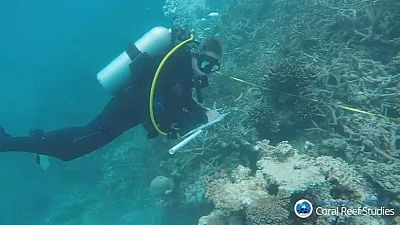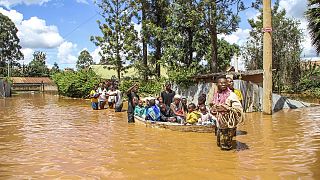Australia
The corals of the Great Barrier Reef are dying and are vulnerable to disease as a result of a bleaching event of unprecedented severity, scientists have warned.
In spring, researchers found that whole sections of corals in the northern third of this jewel world heritage of mankind died because of the water warming.
When they returned in the same area later, the team found that “many other (corals) died more slowly.”
“In March, we found that many corals had suffered a severe bleaching but were still alive. This week, we did not see many survivors,” Andrew Hoey, a specialist at Australian Research Council coral studies at James Cook University said in a statement and blamed it on the dieback phenomenon, a bleaching resulting in coral bleaching. It is caused by the rise in water temperature, resulting in the expulsion of the symbiotic algae that give coral its color and nutrients.
“In addition, snails that eat the living coral focus on the survivors, and weakened corals are more susceptible to disease. Many of the survivors are in very bad condition,” the scientists warned.
The studied reefs are near Lizard Island, off Cairns, gateway to the Great Barrier. According to a researcher Greg Torda, 40% of corals were alive in March but they are only less than 5% today.
The site has already undergone two bleaching events in 1998 and 2002.
Although the evaluation of the exact extent of the damage is still ongoing, “it is already clear that this episode is more severe than the previous two.”
Besides global warming, the Great Barrier Reef is threatened by agricultural runoff, economic development and proliferation of thorns starfish, starfish that destroy corals.
The site of 345,000 square kilometers and 2,300 kilometers long narrowly avoided being placed in 2015 by Unesco on its endangered sites list.
Further south, the corals are “in much better shape,” the researchers added. “There are always 40% coral cover in the center of the Great Barrier Reef, and corals that were moderately bleached last summer have almost all returned to their normal color.”














02:09
EU scientists say ocean surface temperatures reach record high in February
Go to video
Zimbabwe: Australian tourist missing for more than 9 days
01:02
Pics of the day: January 23, 2024
01:02
Pics of the day: January 17, 2023
01:02
Pics of the day: November 21, 2023
02:07
Small island nations seek help on climate change from UN maritime court